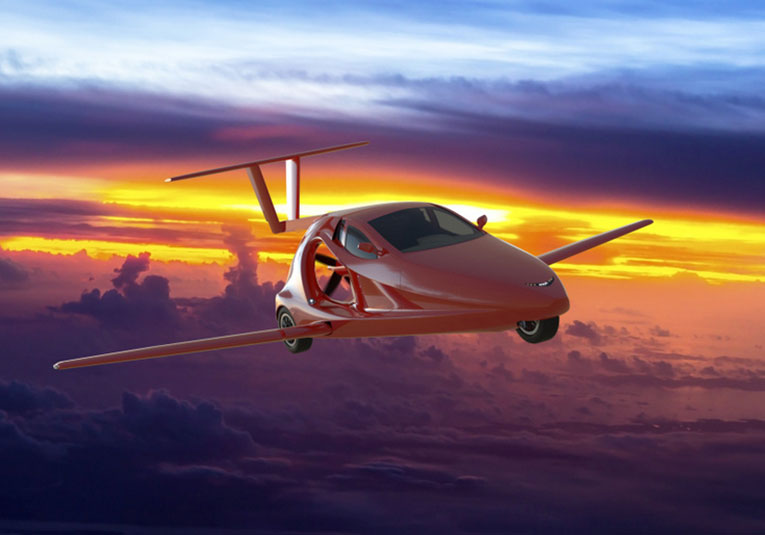
The Switchblade from Samson Sky integrates the practicality of a street-legal vehicle with the versatility of flight, targeting private owners, business travelers, and aviation enthusiasts seeking flexible, on-demand mobility.
With the ability to transition between driving and flying in under three minutes, the Switchblade represents a breakthrough in the pursuit of practical personal air mobility.
Design
The Switchblade’s design blends automotive and aeronautical engineering in a compact, aerodynamic form. In road mode, it functions as a fully enclosed, high-performance sports car with seating for two in a side-by-side configuration. The vehicle features a sleek fuselage, retractable wings, and a tail boom that extends for flight, which can be stowed safely within the body for ground travel. The transition between drive and flight modes is fully automated, relying on electromechanical systems to deploy or retract the wings and tail assembly.
The frame is primarily constructed from lightweight composite materials, including carbon fiber-reinforced polymers, to reduce weight without sacrificing structural integrity. Samson Sky has prioritized aerodynamic efficiency, with attention paid to drag reduction in both driving and flying configurations. The compact footprint enables the Switchblade to fit in a standard garage, enhancing its practicality as a dual-use vehicle.
Features
The Switchblade is equipped with an intuitive control interface for both driving and flying. On the road, it features conventional automotive controls including a steering wheel and pedals. In flight mode, the aircraft employs standard aviation controls, with a stick and rudder system familiar to general aviation pilots. A dual-screen glass cockpit provides critical flight and vehicle data, with integrated navigation and situational awareness features.
One of the defining features of the Switchblade is its automatic wing and tail deployment system. At the push of a button, the wings swing out from under the body and lock into place, while the tail boom extends rearward and secures itself for stable flight. Safety features include a full-vehicle parachute recovery system, energy-absorbing chassis, and reinforced cockpit structure.
Performance
The Switchblade is powered by a turbocharged 3-cylinder liquid-cooled engine developed by Samson Sky, delivering approximately 190 horsepower. This engine drives the wheels during road operations and a pusher propeller in flight mode, using a proprietary power management system to switch between configurations.
In flight, the Switchblade is capable of reaching cruise speeds of around 160 mph (257 km/h) and has a projected maximum range of approximately 450 miles (724 km) on a full tank of premium gasoline. It requires a runway length of approximately 1,100 feet (335 meters) for takeoff, making it suitable for use at small airports and private airstrips.
On the ground, the Switchblade operates as a three-wheeled motorcycle-class vehicle, achieving top speeds of over 125 mph (201 km/h). The driving experience is designed to reflect that of a performance sports car, with precise handling and a low center of gravity.
Capabilities
Designed to provide seamless transition between road and air travel, the Switchblade enables point-to-point transportation that bypasses traffic congestion and airport wait times. Its ability to function as both a personal aircraft and a road vehicle empowers users with unmatched travel flexibility, particularly for regional trips and rural-to-urban commutes.
Samson Sky envisions the Switchblade serving a range of use cases, from business travel and adventure tourism to rural emergency response and personal recreation. Its compliance with the FAA’s Experimental category allows owners to build their own aircraft from a kit under the 51% rule, with factory support and builder assistance available.
As of 2025, the Switchblade is undergoing final testing toward full flight certification, with a significant number of reservations placed worldwide, indicating strong market interest in hybrid personal air vehicles.




